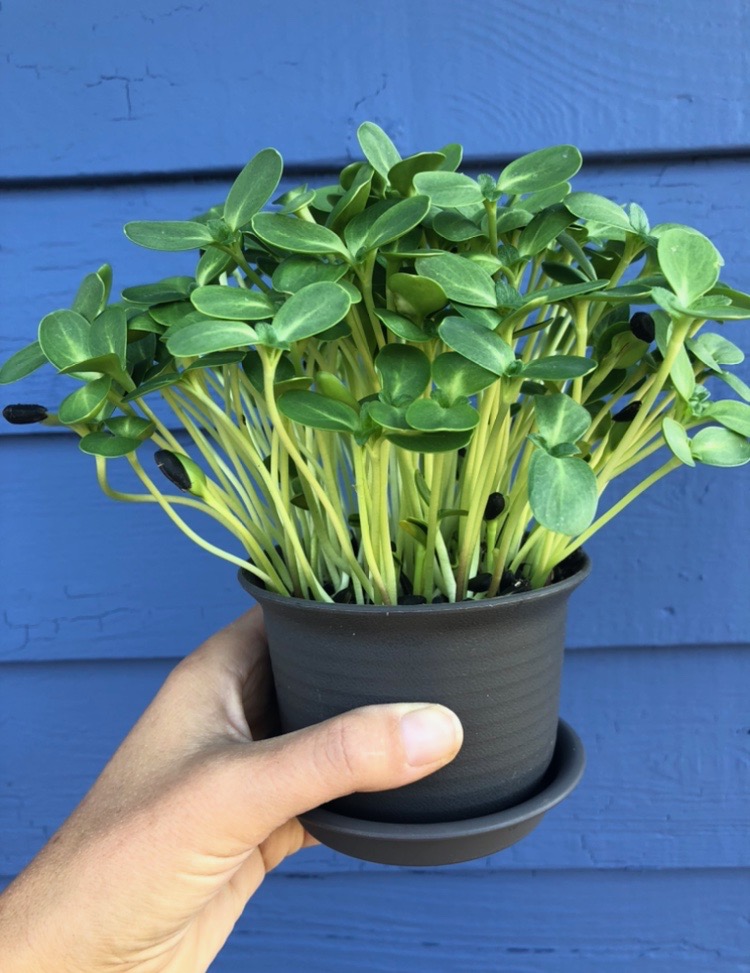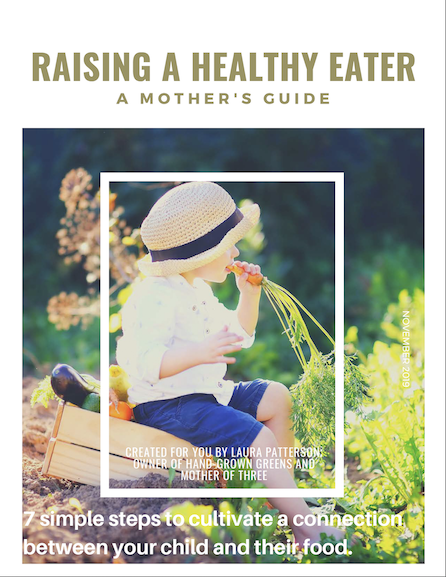Microgreens are often get described as “tiny vegetables”. While this does conjure up cute images in our minds, I think this description is a bit misleading. A more accurate description would be “young vegetables”.
Microgreens are vegetables (as well as herbs and edible flowers), that are harvested when they have passed the sprouting stage and grown into seedlings (also sometimes called shoots).
Microgreens are typically harvested 1-2 weeks after planting when they are about 1-3 inches tall. The cotyledons (seed leaves) have formed and the first set of true leaves is just beginning to emerge. Each individual microgreen could grow into a mature vegetable, herb or flower if planted differently and given the time to grow.

Is the term microgreen just a trendy word for sprouts?
No!
Microgreens and sprouts are different. They differ in; what they are, how they are grown, health risks posed, taste and nutrition they offer.
Lets start with sprouts which most people have been familiar with for some time. Sprouts are germinated seeds generally grown in dark, extremely humid conditions. Sprouts offer many nutrients and a mild crunchy taste. Unfortunately, sprouts also are a high-risk food because the way in which they are grown is a perfect environment for growing a variety of harmful bacterias as well.
Microgreens are different.
Microgreens are more than just germinated seeds. Microgreens are seedlings or baby plants and can be grown in soil, fresh air and sunlight. Not only are microgreens safer to eat but they are richer is nutrients, and have more intense flavors as well as a beautiful appearance.
Another way to picture it; sprouts are like babies, microgreens are like kids, baby vegetables/greens are like adolescents and mature vegetables are like adults.
Have you ever noticed how young kids are nearly bursting with life and energy? So it is with microgreens. This is the stage in a plant’s life when it contains all the nutrition, flavor and vibrancy in its most concentrated levels.

A little history
Microgreens were first made popular by chefs in the early 1980s. They were used primarily to garnish the plates served at higher-end restaurants. Chefs then discovered that microgreens are more than just visually stunning. Microgreens also add incredible flavor to dishes. With this knowledge, microgreens began to be incorporated as part of the dish not just a decoration.
Over time, and through research we learned that in addition to color and flavor, microgreens are also packed with concentrated nutrients! Many health food communities who have enjoyed sprouting since the 1960’s and 1970’s turned to microgreens as safer alternative, for quick growing, nutrient dense greens.
As knowledge of microgreens spreads, the general public demand for microgreens increases. Microgreens are now widely available to home cooks in many parts of the world and are appreciated by all kinds of people for their nutrition, flavors and beauty.
Another huge benefit of microgreens is the convenience factor – they are incredible easy to cook with! There is no prep and chopping work as with most vegetables. You literally just toss them into your meals such as soups, sandwiches, stir-frys, omelettes, salads, etc. This makes Microgreens the ultimate healthy convenience food!
Microgreens also serve as part of a solution to the problem of our ever fragile food system. Microgreens do not need to be (and in fact really can not be) imported or exported. Microgreens have a short shelf life and are meant to be consumed close to where they are grown. If you don’t have a local grower near you, take heart! Microgreens are incredibly easy to grow even if you have very little space. They can be grown right in your own home.
If you are interested in living a more sustainable lifestyle, microgreens can be a step in this direction. Plus it just feels amazing to know you can provide yourself and your loved ones with fresh, nutrient-dense microgreens year-round!


